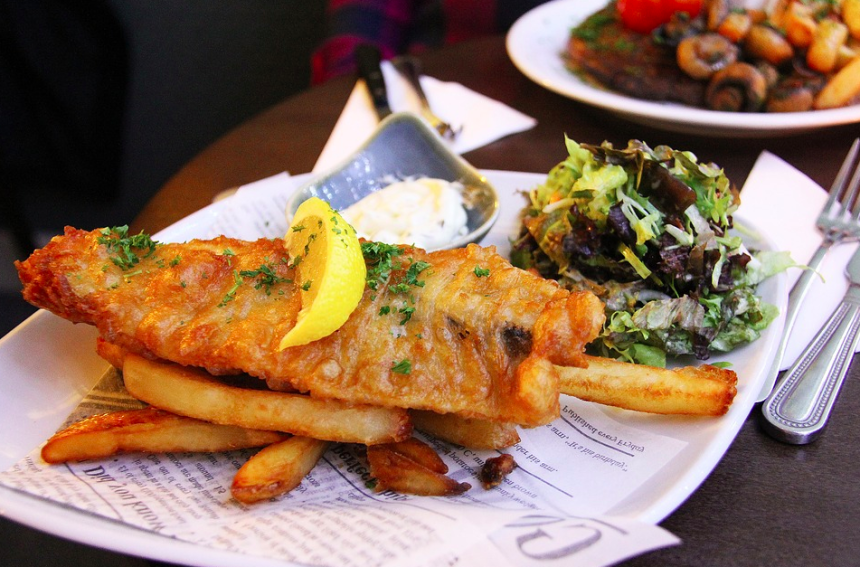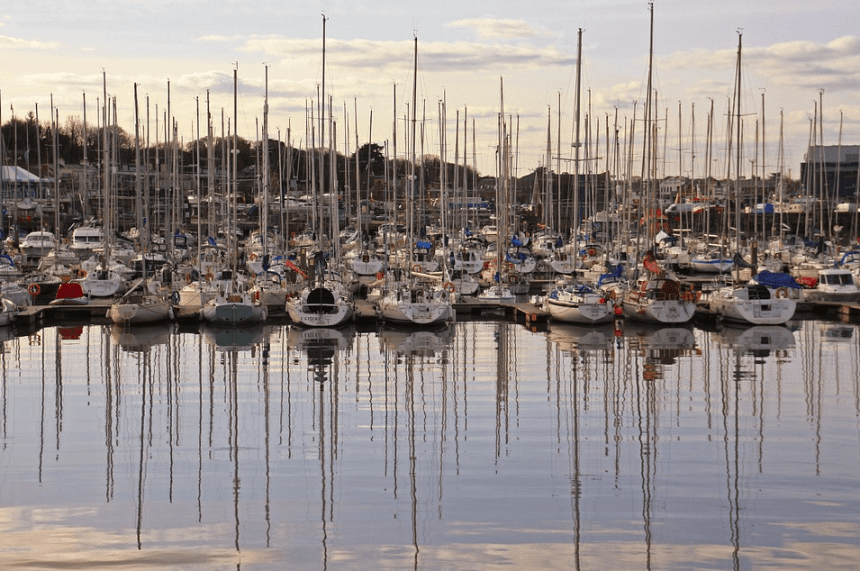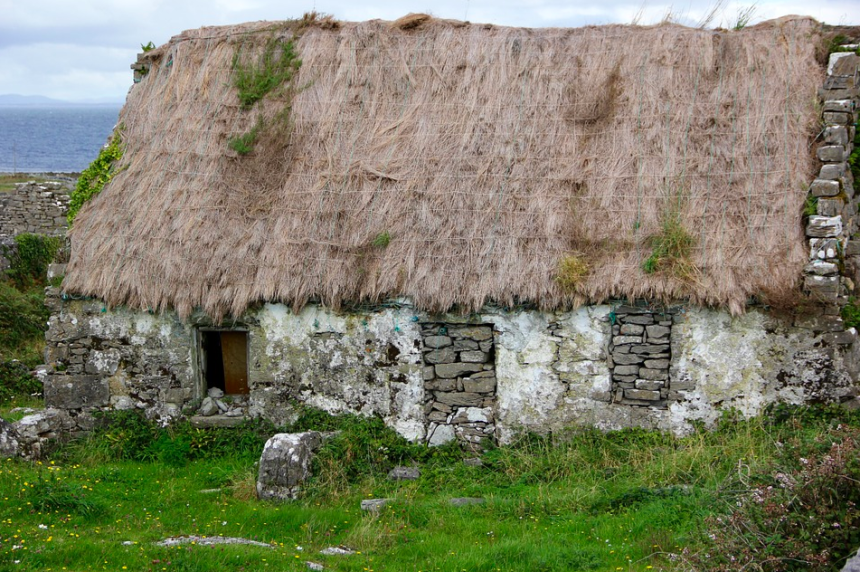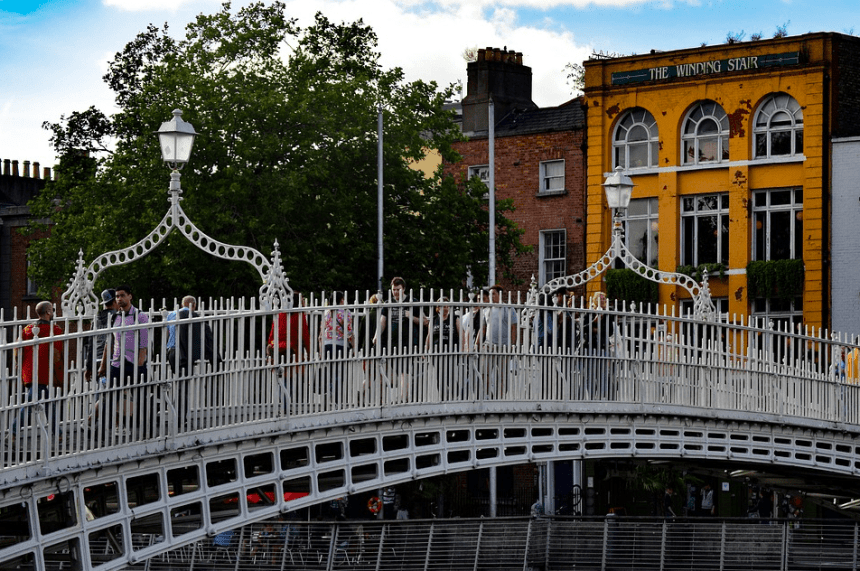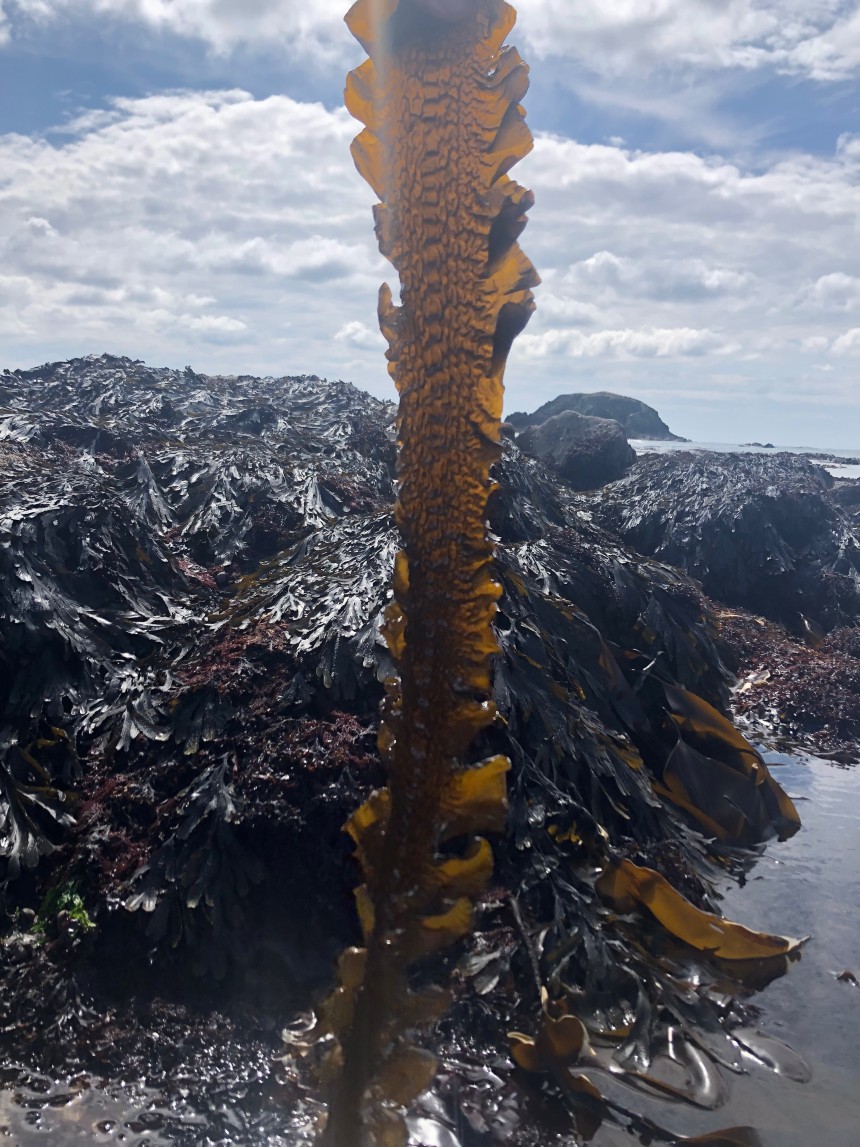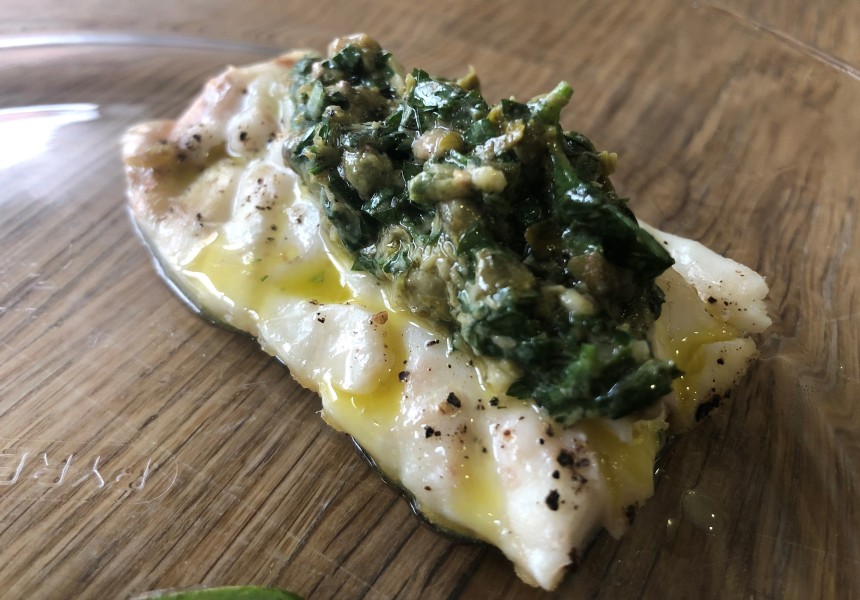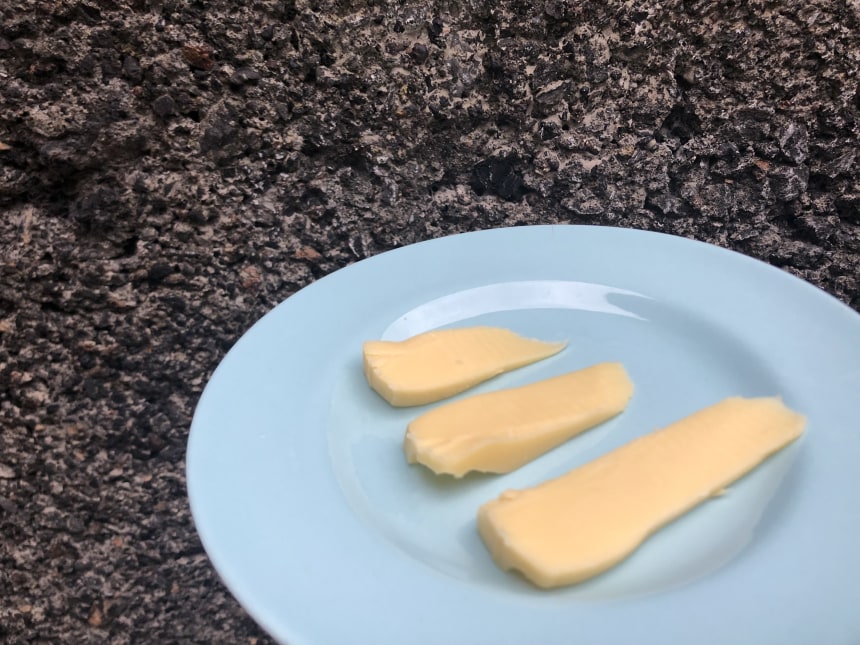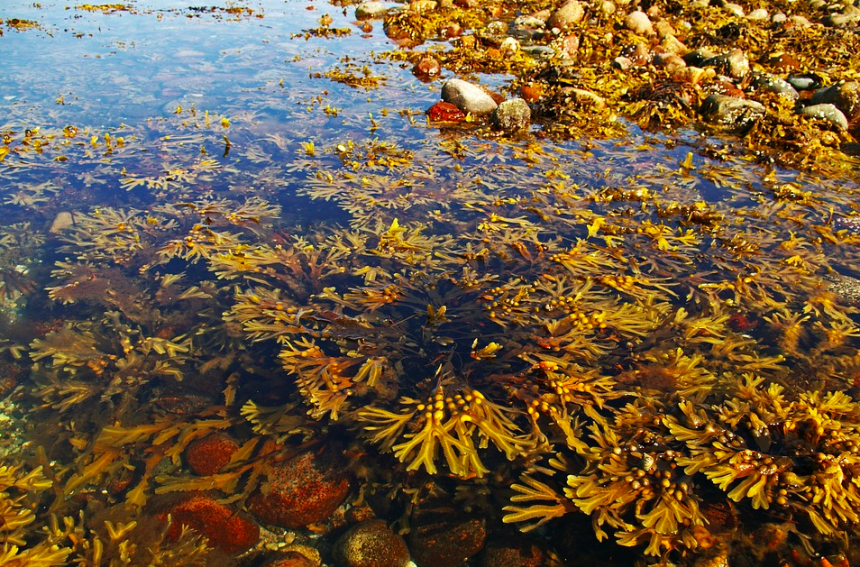Erin Skahan
In Ireland, referring to a food item as traditional depends on how far back you want to go. Historically traditional and currently traditional are quite different things, so in order to get the full picture, it’s important to differentiate between the two. What people tend to think of when they think about Irish cuisine today are foods like Fish & Chips, rashers (similar to Canadian-style bacon), and the blessed and cursed potato. This, however, subjects its culinary history to an undue oversimplification. Over centuries, inhabitants rather brilliantly adapted to their geographically unique, and often challenging, locale. To understand the true nature of Irish food lets first dispel the stereotypes.
 While Fish & Chips are popular in Ireland, the famous fried concoction began elsewhere. Breaded and fried fish first showed up in England in the 16th century, brought over by Jewish immigrants coming from Spain and Portugal. It’s pairing with chips, those thick slices of fried potatoes have a few possible origins. The most interesting one is that when the rivers froze in England, women had the idea to substitute the potato for fish, which they didn’t have access to during the winter months. It was chopped and put into the frier, first in place of, and later in addition to fish, as it again became available as the rivers began to thaw. The first commercial chippers, as they are still called today, originated in England in the 1860s.
While Fish & Chips are popular in Ireland, the famous fried concoction began elsewhere. Breaded and fried fish first showed up in England in the 16th century, brought over by Jewish immigrants coming from Spain and Portugal. It’s pairing with chips, those thick slices of fried potatoes have a few possible origins. The most interesting one is that when the rivers froze in England, women had the idea to substitute the potato for fish, which they didn’t have access to during the winter months. It was chopped and put into the frier, first in place of, and later in addition to fish, as it again became available as the rivers began to thaw. The first commercial chippers, as they are still called today, originated in England in the 1860s.
The concept then appeared in Dublin in the 1880s, introduced by Italian immigrant Guiseppe Cervi. Likely, Cervi had witnessed or heard about the success of similar shops set up by other Italian immigrants in England, and began to sell fried fish and chips outside of pubs. Eventually, it caught on, and thus began a tradition that remains popular, even iconic, today. There are endless chippers to choose from, so booking a food tour while in Dublin can help you locate some of the local favourites. A great spot to enjoy classic fish & chips, if the weather holds, is Beshoff Bros. in Howth. This is a third generation family business that has been in operation since 1939.
 It’s necessary to have a basic understanding of an important dark time in the history of Ireland in order to fully grasp the food culture today. The potato, long associated with the island due to the infamous Great Famine, is also not of Irish origin. Potatoes had been brought to Europe from South America by the Spanish after their conquest of Peru. The versatile root vegetable first arrived in Ireland in 1589 and quickly became a highly productive and nutritious staple food, especially among the poor. When a blight infected the crop in 1845, the Great Famine began and, deprived of the heavily depended upon potato, one million people perished. It was less from starvation and more often a result of malnourishment that caused the mass casualties. The potato crop failure wasn’t the only culprit, as the island actually produced enough food to make up for the loss of the vegetable. However, decisions were made within the English ruled government at the time to ship most of this food out for export at a higher profit. In 1849, the blight finally ended, but not without leaving an indelible mark upon the population due to death and mass emigration.
It’s necessary to have a basic understanding of an important dark time in the history of Ireland in order to fully grasp the food culture today. The potato, long associated with the island due to the infamous Great Famine, is also not of Irish origin. Potatoes had been brought to Europe from South America by the Spanish after their conquest of Peru. The versatile root vegetable first arrived in Ireland in 1589 and quickly became a highly productive and nutritious staple food, especially among the poor. When a blight infected the crop in 1845, the Great Famine began and, deprived of the heavily depended upon potato, one million people perished. It was less from starvation and more often a result of malnourishment that caused the mass casualties. The potato crop failure wasn’t the only culprit, as the island actually produced enough food to make up for the loss of the vegetable. However, decisions were made within the English ruled government at the time to ship most of this food out for export at a higher profit. In 1849, the blight finally ended, but not without leaving an indelible mark upon the population due to death and mass emigration.
 This period in Irish history is essential in understanding the complicated relationship with food in earlier times, and how it has affected the psyche and culinary traditions of today. For example, Ireland’s land mass is roughly the size of the US state of West Virginia. Yet, it is one of the most popular destinations for tourism, with St. Patrick’s Day being celebrated in cities all over the world. This far-reaching culture would have been much less so without the mass emigration which took place out of necessity during the time of the famine. While the population of Ireland has never recovered from the losses of the 1840s, the descendants of immigrants are far-reaching, and have maintained strong cultural ties to the heritage of their ancestors. There is much to be understood about this tumultuous time in Irish history, and there are excellent tour guides who can provide further insight, especially from pre-famine to the Revolution of 1916, which finally allowed the Irish to govern themselves. Touring the recently opened Irish Famine Museum in Stephen’s Green Shopping Centre is a good place to start, and for history buffs, the GPO on O’ Connell Street offers a wealth of information. If you have Irish heritage, be sure to visit EPIC The Irish Immigration Museum, complete with a well-resourced Genealogy Centre to dig deeper into your own Irish roots.
This period in Irish history is essential in understanding the complicated relationship with food in earlier times, and how it has affected the psyche and culinary traditions of today. For example, Ireland’s land mass is roughly the size of the US state of West Virginia. Yet, it is one of the most popular destinations for tourism, with St. Patrick’s Day being celebrated in cities all over the world. This far-reaching culture would have been much less so without the mass emigration which took place out of necessity during the time of the famine. While the population of Ireland has never recovered from the losses of the 1840s, the descendants of immigrants are far-reaching, and have maintained strong cultural ties to the heritage of their ancestors. There is much to be understood about this tumultuous time in Irish history, and there are excellent tour guides who can provide further insight, especially from pre-famine to the Revolution of 1916, which finally allowed the Irish to govern themselves. Touring the recently opened Irish Famine Museum in Stephen’s Green Shopping Centre is a good place to start, and for history buffs, the GPO on O’ Connell Street offers a wealth of information. If you have Irish heritage, be sure to visit EPIC The Irish Immigration Museum, complete with a well-resourced Genealogy Centre to dig deeper into your own Irish roots.

So what is Irish food? Probably the most significant food item both historically and today would be dairy. Cattle play an important role in the culinary history of the country, less so for meat than for the versatility of dairy products. Milk was often mixed with vegetables to form thick, soup-like dishes that were both filling and nutritious. A classic example would be colcannon, a hearty combination of mashed potatoes, leafy greens such as kale or cabbage, milk or cream and butter. Traditionally during Halloween, colcannon was served with a surprise. Buried somewhere within the mash, a future predicting charm would be uncovered: a coin signified wealth, a stick predicted trouble, and a button or thimble meant you’d remain a bachelor or spinster for the rest of your days. A somewhat lighter option is creamed leeks with butter, not always easy to find in restaurants, but a dairy packed staple that’s common in home cooking today. To sample your way through these and other classics, the Hairy Lemon in Dublin is the place to go. It offers a down-to-earth, no fuss representation of what can be referred to as traditional Irish home cooking since these foods aren’t often found in restaurants. Here you can find your colcannon (thankfully, without the psychic abilities), as well as other Dublin classics like Coddle, Irish Stew, and Bacon & Cabbage.
 For a more upscale version of Irish classics, reserve a table at The Winding Stair. This is a Dubin institution since the 1970s with a rich history, in both culinary and literary terms. They beautifully execute plates that fuse the past and present, relying on Irish producers for everything from meat, seafood, cheese, beer and spirits. Furthermore, request a table by the window, for an unbeatable view of the River Liffey and the famous Ha’penny Bridge below.
For a more upscale version of Irish classics, reserve a table at The Winding Stair. This is a Dubin institution since the 1970s with a rich history, in both culinary and literary terms. They beautifully execute plates that fuse the past and present, relying on Irish producers for everything from meat, seafood, cheese, beer and spirits. Furthermore, request a table by the window, for an unbeatable view of the River Liffey and the famous Ha’penny Bridge below.

Seaweed has long been an abundant and mineral-packed resource along Irish shores. In the past, coastal people would gather it at low tide and leave it in the sun to dry. It was most often spread over fields to help fertilize the shallow soil to aid in growing vegetables, and commonly for medicinal purposes in concoctions to treat colds and other maladies. In cooking, it was used as a thickener thanks to its gelatinous properties, and it added a more complex salinity to the flavour of soups and stews. A popular dessert from ancient times was Irish moss pudding, where carrageen, a rust coloured seaweed, was boiled lightly with milk and sweetened with honey. Today, Irish seaweed is enjoying a much overdue renaissance, considering its ubiquity and health benefits. There are small companies offering foraged, dried and packaged products that can be found in speciality food shops. You can also book a tour with an expert tour guide to learn how to forage on your own. Look for courses offered by The Sea Gardener if you are in the Waterford area and book a tour for a foraging picnic on the beach. You will learn the health benefits and uses of marine vegetables like sea spaghetti, the sweet properties of sugar kelp, and sample the umami-packed dillisk.
 If on the west coast, book a tour at Mungo Murphy’ Seaweed Co. near Galway. Here you can also tour their abalone farm and learn about sustainable aquaculture practices. Taste the difference between fresh & cooked abalone, and try the rich, custard-like sea urchin, considered to be an aphrodisiac.
If on the west coast, book a tour at Mungo Murphy’ Seaweed Co. near Galway. Here you can also tour their abalone farm and learn about sustainable aquaculture practices. Taste the difference between fresh & cooked abalone, and try the rich, custard-like sea urchin, considered to be an aphrodisiac.
Naturally, the vast waters and surrounding coastline have created a reliance on seafood that is well represented across the country. Early settlers relied heavily on what they could find close to shore, foraging for molluscs such as limpets, mussels, and periwinkles. Mussels are extremely popular today in Ireland and can be found in most restaurants. Steamed and served in a broth of white wine, cream and fresh herbs with a side of brown bread is common, and pairs well with a Guinness on a rainy afternoon.
 With both dairy and seafood being of very high quality here, Seafood Chowder is another modern staple. A filling blend of white fish, salmon, mussels, and root vegetables in a creamy broth, there’s a competitive streak throughout the country for the title of best chowder. A good rule of thumb is to head toward the source when it comes to seafood, so you will find the freshest catch in port towns where the fishing boats dock. In Dublin, there’s no place like Howth.
With both dairy and seafood being of very high quality here, Seafood Chowder is another modern staple. A filling blend of white fish, salmon, mussels, and root vegetables in a creamy broth, there’s a competitive streak throughout the country for the title of best chowder. A good rule of thumb is to head toward the source when it comes to seafood, so you will find the freshest catch in port towns where the fishing boats dock. In Dublin, there’s no place like Howth.
 Restaurants and cafe’s line the port in this small fishing village, only a 30-minute train journey from Dublin. If you want to sample a few of the freshest items brought in for the day, try Octopussy’s tapas style options. To take something fresh back for cooking, the fishmongers here offer the freshest catch you will find. Walk it off and enjoy the view of Howth Lighthouse along the Howth Coastal Walk, offering several paths along the rocky cliffs with ample photo opportunities.
Restaurants and cafe’s line the port in this small fishing village, only a 30-minute train journey from Dublin. If you want to sample a few of the freshest items brought in for the day, try Octopussy’s tapas style options. To take something fresh back for cooking, the fishmongers here offer the freshest catch you will find. Walk it off and enjoy the view of Howth Lighthouse along the Howth Coastal Walk, offering several paths along the rocky cliffs with ample photo opportunities.
 Cheese and butter both benefit from high-quality dairy throughout Ireland. Grass-fed cows are to thank for the clean, rich flavour of Irish butter, famously exported all over the world in the shimmering green and gold wrapper of Kerrygold. In many restaurants, you will find it common that butter is made in house, often with infusions of leek, garlic, or beetroot.
Cheese and butter both benefit from high-quality dairy throughout Ireland. Grass-fed cows are to thank for the clean, rich flavour of Irish butter, famously exported all over the world in the shimmering green and gold wrapper of Kerrygold. In many restaurants, you will find it common that butter is made in house, often with infusions of leek, garlic, or beetroot.
 Count yourself very lucky if you come across something called bog butter. There have been several discoveries of ancient butter, left for preservation in wooden containers in the boglands of western Ireland. Some have been found to be over 2,000 years old, and still (somewhat) edible due to the acidity of the soil, which keeps it from spoiling. Some avid chef’s experiment with this concept even today, making butter and storing it for a year or more, resulting in an earthy, peaty flavoured spread.
Count yourself very lucky if you come across something called bog butter. There have been several discoveries of ancient butter, left for preservation in wooden containers in the boglands of western Ireland. Some have been found to be over 2,000 years old, and still (somewhat) edible due to the acidity of the soil, which keeps it from spoiling. Some avid chef’s experiment with this concept even today, making butter and storing it for a year or more, resulting in an earthy, peaty flavoured spread.
Irish cheese has a broad range, including everything from the nutty mushroom-flavoured Gubbeen to soft and earthy Durrus or the ash covered St.Tola. Booking a food tour in Dublin or Cork will certainly include tastings of local, seasonal offerings, and provide information on how the unique flavours come together based on the agricultural practices of the producer. In Dublin, a visit to Sheridan’s Cheesemonger is a must. This tiny establishment has been around since 1997, an expansion of their Galway shop which opened 2 years earlier, following the success of their farmer’s market stalls. If you are not a fan of cake, they offer special occasion cheese wheel cakes. They host an annual food festival every May in County Meath with over 100 local vendors, including the local arm of the Slow Food movement, Slow Food Ireland.
 The quality of Irish food in recent history can be traced to an estate in County Cork called Ballymaloe House. In 1983, Darina Allen started a cookery school on the farm of her in-laws, Myrtle and Ivan Allen. With a focus on fresh, organically farmed vegetables, grass-fed free-roaming cattle and fowl, and simple cooking methods, the influence of Ballymaloe and the culinary enthusiasm that followed changed Irish food for the better. Today, even pub food has been elevated to a remarkably high standard. Restaurant culture in Ireland has grown in popularity, on par with other major food capitals of Europe. The ideal region to start your food tour is in the food capital of Ireland, West Cork. Food festivals like the West Waterford Food Festival held in Dungarvan every April, and A Taste of West Cork in September are great opportunities to immerse yourself in the flavours and culture of the country.
The quality of Irish food in recent history can be traced to an estate in County Cork called Ballymaloe House. In 1983, Darina Allen started a cookery school on the farm of her in-laws, Myrtle and Ivan Allen. With a focus on fresh, organically farmed vegetables, grass-fed free-roaming cattle and fowl, and simple cooking methods, the influence of Ballymaloe and the culinary enthusiasm that followed changed Irish food for the better. Today, even pub food has been elevated to a remarkably high standard. Restaurant culture in Ireland has grown in popularity, on par with other major food capitals of Europe. The ideal region to start your food tour is in the food capital of Ireland, West Cork. Food festivals like the West Waterford Food Festival held in Dungarvan every April, and A Taste of West Cork in September are great opportunities to immerse yourself in the flavours and culture of the country.
"Erin is an experienced solo traveler, interested in how food shapes culture. She cooks and writes her way through cities and villages, primarily focusing on Western Europe."
Image details and licenses
{Photos of Cottage Seaweed Mussels White Fish Prawn Tapas Beetroot Butter Cheese by Erin Skahan, all rights reserved.}
